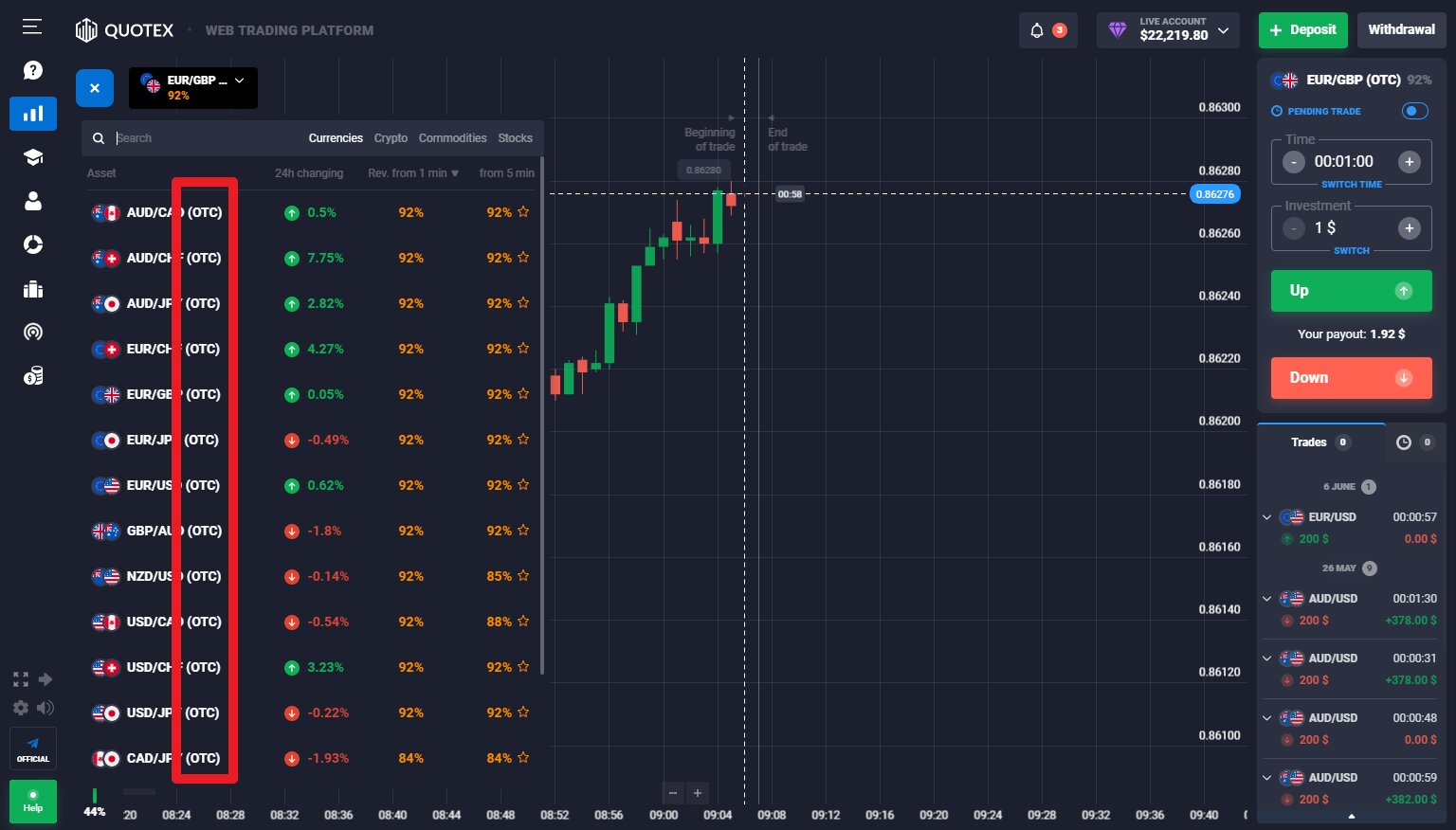Understanding Liquidation in Crypto
Liquidation is a crucial concept in the world of cryptocurrency trading. It refers to the process of selling off a trader’s assets or positions to repay their outstanding debts or margin requirements. In simpler terms, it is a mechanism used to prevent traders from accumulating significant losses and protect the integrity of the trading platform.
Typically, liquidation occurs when a trader’s position faces a rapid decline in value, resulting in the trader no longer meeting the required margin requirements set by the exchange. The exchange then automatically sells off the trader’s assets at the prevailing market price to offset the losses.
Liquidation is a common occurrence in highly volatile and unpredictable markets, such as the cryptocurrency market. Due to the rapid price fluctuations, traders who have taken on excessive leverage or insufficiently managed their risks may find themselves at risk of liquidation.
When a trader is liquidated, the proceeds from the sale of their assets are used to repay the debt they owe. However, if the value of the assets sold is insufficient to cover the entire debt, a trader may face a partial liquidation, where only a portion of the debt is repaid, leaving them with a remaining balance to settle.
It is important for traders to fully understand the risks associated with liquidation and carefully manage their positions and margin requirements to avoid unnecessary losses. Additionally, different cryptocurrency exchanges may have varying liquidation procedures, so it is essential to familiarize oneself with the specific rules and processes of the exchange being used.
Overall, liquidation in crypto is a mechanism implemented to protect traders and the integrity of trading platforms. It serves as a safeguard against excessive risk-taking and helps maintain a more stable and orderly market. By understanding how liquidation works and implementing risk management strategies, traders can navigate the volatile cryptocurrency market more effectively and minimize the chances of being liquidated.
How Does Liquidation Work in Crypto?
Liquidation in the world of cryptocurrency is a process that occurs when a trader’s position reaches a predetermined threshold of loss, triggering an automatic sale of their assets. This mechanism is designed to protect both the trader and the exchange from significant losses.
When a trader takes on leverage, they borrow funds from the exchange to increase their trading power. However, this also increases the risk associated with their positions. To mitigate this risk, exchanges set a margin requirement, which is the minimum amount of equity that a trader must maintain in their account.
If the value of a trader’s assets declines to a point where their equity falls below the margin requirement, the exchange will initiate the liquidation process. This involves selling the trader’s assets at the prevailing market price to repay the debt owed to the exchange.
It’s important to note that liquidation typically occurs in a hierarchical order. The exchange may first liquidate the positions with the highest potential losses, gradually working down the list. This ensures a fair and efficient liquidation process.
The sale of assets during liquidation is usually done in the open market, either through limit orders or market orders, depending on the exchange’s rules. The proceeds from these sales are used to repay the outstanding debt or margin requirements. If the value of the assets is insufficient to cover the entire debt, the trader will be required to make up the difference.
Furthermore, different exchanges have varying liquidation policies and procedures. Some exchanges may implement a partial liquidation system, where only a portion of the position is sold to cover the debt, while others may require the full position to be liquidated.
To avoid the risks of liquidation, traders should carefully manage their positions and use appropriate risk management tools, such as setting stop-loss orders or utilizing risk calculators to determine optimal position sizes. By understanding how liquidation works and employing sound risk management strategies, traders can navigate the volatile nature of the cryptocurrency market more effectively.
The Process of Liquidation in Crypto Trading
Liquidation in crypto trading follows a specific process that is triggered when a trader’s position falls below a certain threshold, leading to the automatic sale of their assets. Understanding this process is crucial for traders to effectively manage their risk and navigate the volatile cryptocurrency market.
The process of liquidation typically starts when a trader’s equity drops below the required margin level set by the exchange. This margin level is often expressed as a percentage, and it indicates the minimum amount of equity a trader must maintain in their account.
When the equity falls below the required margin level, the exchange will issue a margin call to the trader. This is a notification that the trader needs to either deposit additional funds into their account to meet the margin requirements or close a portion of their positions to reduce the risk exposure.
If the trader fails to respond to the margin call or is unable to meet the margin requirements, the exchange will initiate the liquidation process. During this process, the exchange will automatically sell off the trader’s assets at the prevailing market price to repay the debt owed.
The order of liquidation can vary depending on the exchange’s policies. Some exchanges may prioritize liquidating the positions with the highest potential losses first, while others may follow a different hierarchy. This ensures a fair and orderly liquidation process across the platform.
It’s important to note that the liquidation process is typically swift, as the market price can change rapidly. The exchange aims to close the positions as quickly as possible to minimize the impact of additional losses on both the trader and the exchange.
Once the assets are sold, the proceeds are used to repay the trader’s outstanding debt or margin requirement. If the funds raised from the liquidation are insufficient to cover the entire debt, the trader may face a remaining balance that needs to be settled.
To avoid liquidation, traders should actively manage their positions, monitor market conditions, and employ proper risk management techniques. This includes setting stop-loss orders, using trailing stops, and diversifying their portfolio to mitigate potential losses. By understanding and implementing these strategies, traders can reduce the risk of liquidation and protect their capital in the volatile world of crypto trading.
Factors That Affect Liquidation in Crypto
Liquidation in crypto trading is influenced by various factors that can determine whether a trader’s positions will be liquidated or not. Understanding these factors is essential for traders to effectively manage their risk and make informed trading decisions in the cryptocurrency market.
1. Leverage: One of the primary factors that affect liquidation is the amount of leverage a trader takes. Higher leverage amplifies both potential profits and losses. The higher the leverage, the closer a trader’s position may be to the liquidation point. It is crucial for traders to carefully assess and manage the leverage they use to avoid excessive risk exposure.
2. Margin Requirements: Each cryptocurrency exchange sets its own margin requirements, which determine the minimum amount of equity traders must maintain in their accounts. Higher margin requirements provide traders with a larger buffer against liquidation. Traders should be aware of the margin requirements of the exchange they are trading on and ensure they have sufficient funds in their account to meet these requirements.
3. Volatility: The cryptocurrency market is well-known for its high volatility. Sudden and significant price movements can lead to increased liquidation risks. During periods of extreme volatility, traders should exercise caution and consider adjusting their positions or using tighter risk management strategies to avoid being liquidated.
4. Risk Management: The effectiveness of a trader’s risk management strategies plays a vital role in avoiding liquidation. Setting appropriate stop-loss orders, diversifying the trading portfolio, and using proper position sizing are all important risk management practices that can help traders mitigate the risk of liquidation.
5. Market Liquidity: The availability of liquidity in the market can impact the liquidation process. In illiquid markets, where there may be a limited number of buyers and sellers, executing liquidation orders at favorable prices may be challenging. Traders should consider the liquidity of the cryptocurrency they are trading and be mindful of potential liquidity issues during the liquidation process.
6. Exchange Policies: Different cryptocurrency exchanges have varying liquidation policies and procedures. Traders should familiarize themselves with the specific rules of the exchange they are using, including the methods and timeframes for liquidation. This knowledge will enable them to understand how the exchange handles liquidation and plan their trading strategies accordingly.
By considering these factors and implementing effective risk management techniques, traders can better navigate the liquidation risks associated with crypto trading. It is crucial to stay informed, monitor market conditions, and make informed decisions to avoid the potential negative consequences of liquidation.
Common Reasons for Liquidation in Crypto
Liquidation in crypto trading can occur due to various reasons, often stemming from the unpredictable nature of the cryptocurrency market and the inherent risks associated with trading. Understanding these common reasons for liquidation is important for traders to minimize their exposure to potential losses and manage their risk effectively.
1. Margin Call Ignorance: One of the primary reasons for liquidation is when traders fail to respond to a margin call. When the equity in a trader’s account falls below the required margin level, the exchange issues a margin call to prompt action. Ignoring or not properly understanding the importance of a margin call can lead to liquidation of positions.
2. High Leverage: Trading with high leverage can amplify both profits and losses. While leverage can increase potential gains, it also increases the risk of liquidation. Traders who take on excessive leverage without adequate risk management measures can find themselves at a higher risk of being liquidated.
3. Volatile Market Conditions: The cryptocurrency market is known for its high volatility. Sharp price fluctuations can trigger rapid liquidation if positions move against traders. During periods of extreme volatility, sudden market movements can lead to significant losses and potential liquidation.
4. Insufficient Risk Management: Inadequate risk management strategies can greatly increase the likelihood of liquidation. Failing to set appropriate stop-loss orders, not diversifying the trading portfolio, or neglecting to use proper position sizing are all common mistakes that can expose traders to liquidation risks.
5. Lack of Market Understanding: Inexperienced traders who lack a solid understanding of market dynamics may find themselves liquidated more frequently. Not being aware of market trends, failing to conduct proper research, and making impulsive trading decisions can result in losses that lead to liquidation.
6. System Glitches or Technical Errors: While rare, system glitches or technical errors on cryptocurrency exchanges can lead to unexpected liquidation. Traders may face liquidation due to an exchange’s malfunctioning order execution, incorrect margin calculations, or other technical discrepancies that trigger automated liquidation of positions.
7. Lack of Risk-Averse Mindset: Some traders may exhibit a gambling mentality rather than a risk-averse approach. Engaging in reckless trading practices, chasing quick profits, and disregarding risk warnings can increase the likelihood of liquidation.
To avoid these common reasons for liquidation, traders should prioritize risk management, stay informed about market trends, employ strategies appropriate for their risk tolerance, and maintain a disciplined trading approach. This includes setting and adhering to appropriate stop-loss levels, regularly monitoring positions, and continuously updating risk management strategies as the market evolves.
By acknowledging these common reasons for liquidation and taking proactive steps to mitigate risks, traders can better protect their capital and navigate the volatile cryptocurrency market more effectively.
Risks and Benefits of Liquidation in Crypto
Liquidation in crypto trading carries both risks and benefits for traders. Understanding these aspects is crucial for making informed decisions and effectively managing risk in the volatile cryptocurrency market.
Risks:
1. Loss of Capital: Liquidation in crypto trading can result in the loss of a trader’s capital. If a trader’s positions are liquidated at unfavorable prices, they may incur significant losses that can deplete their account balance.
2. Market Volatility: In highly volatile markets, the price movements can be swift and unpredictable. This volatility can increase the chances of liquidation if positions move against traders rapidly, potentially resulting in substantial losses.
3. Systemic Risks: Liquidity concerns, technical glitches, or unforeseen events in the cryptocurrency market can introduce systemic risks. These risks can lead to unexpected liquidation or disruptions in the liquidation process, impacting traders’ positions and potentially causing financial harm.
4. Emotional Impact: Liquidation can have a psychological impact on traders, leading to fear, frustration, and disappointment. Emotional reactions can cloud judgment and lead to impulsive trading decisions, which can further compound losses.
Benefits:
1. Risk Management: Liquidation serves as a risk management mechanism. It protects traders from potentially large losses by automatically closing positions when they reach predetermined thresholds. Thus, liquidation helps maintain risk discipline and prevents traders from losing more than they can afford.
2. Market Order Execution: Liquidation orders are typically executed as market orders, ensuring fast and efficient execution. This allows traders to exit positions swiftly, especially in times of high volatility, reducing the impact of adverse price movements.
3. Platform Stability: Liquidation mechanisms promote stability on cryptocurrency trading platforms. By closing positions that no longer meet margin requirements, exchanges ensure the overall health and integrity of the trading ecosystem.
4. Margin Efficiency: Liquidation allows traders to access leverage, which can enhance their trading power. Through margin trading, traders can potentially maximize their profits by magnifying their exposure to market movements.
It is important for traders to be aware of the risks associated with liquidation and implement effective risk management strategies. This includes setting appropriate stop-loss orders, using proper leverage, conducting thorough market analysis, and diversifying their trading portfolios.
While liquidation can help prevent substantial losses, traders should also acknowledge that it carries its own risks. By staying informed, having a well-defined trading plan, and maintaining emotional discipline, traders can navigate the risks and potential benefits of liquidation in the cryptocurrency market.
Strategies to Avoid Liquidation in Crypto Trading
Avoiding liquidation is a key goal for traders in the cryptocurrency market, as it helps protect their capital and preserves their trading positions. By implementing effective strategies, traders can minimize the risk of liquidation and increase their chances of success. Here are several strategies to consider:
1. Proper Risk Management: Implementing a sound risk management strategy is crucial to avoid excessive losses and potential liquidation. This includes setting appropriate stop-loss orders to limit downside risk, determining position sizes based on account equity, and diversifying the trading portfolio to spread risk across different assets.
2. Use Leverage Wisely: Utilizing leverage can increase trading power, but it also amplifies potential losses. It is important to use leverage judiciously and avoid overextending oneself. Consider starting with lower leverage ratios and gradually increasing them as experience and confidence grow.
3. Set Realistic Targets: Establish realistic profit and loss targets for each trade. Avoid chasing unrealistic gains or holding onto losing positions in the hope of a reversal. Taking profits and cutting losses at predetermined levels can help prevent prolonged drawdowns and potential liquidation.
4. Stay Informed: Keep up with the latest news, market trends, and developments in the cryptocurrency industry. Stay informed about potential events or regulatory changes that could significantly impact market conditions. Being aware of market dynamics helps in making better-informed trading decisions.
5. Continually Monitor Positions: Regularly monitor open positions and adjust stop-loss orders as necessary. Markets can change rapidly, and unexpected price movements can increase the risk of liquidation. Stay vigilant and adjust risk management measures accordingly to protect capital.
6. Consider Hedging Strategies: Hedging involves opening positions that offset the risk of existing holdings. It can be achieved through various methods, such as trading on different exchanges, utilizing derivatives, or pairing long and short positions. Hedging strategies can help mitigate losses and reduce the need for liquidation.
7. Practice Patience and Discipline: Emotions can cloud judgment and lead to impulsive decisions. Maintain a disciplined approach to trading by sticking to predetermined strategies and avoiding impulsive trades based on fear or greed. Patience and discipline are crucial to long-term success in crypto trading.
8. Regularly Review and Adjust Strategies: Adaptability is key in the fast-paced cryptocurrency market. Continually review and analyze trading strategies to identify areas for improvement. Adjust risk management techniques, incorporate new information, and learn from past mistakes to refine and enhance trading approaches.
Remember, there is no foolproof strategy to completely eliminate the risk of liquidation, as market conditions can be unpredictable. However, by implementing these strategies and remaining disciplined, traders can significantly reduce the likelihood of liquidation and increase their chances of successful and profitable trading.
Tips for Dealing with Liquidation in Crypto
Experiencing liquidation in crypto trading can be a challenging and stressful situation. However, there are some tips and strategies that can help traders effectively navigate and deal with liquidation. Here are some valuable tips to consider:
1. Stay Calm and Assess the Situation: It is important to remain calm and avoid panic when facing liquidation. Take a step back, assess the situation objectively, and analyze the factors that led to the liquidation. This will help in making rational decisions and formulating a plan to recover.
2. Review Risk Management Practices: Analyze your risk management strategies and determine if there are areas that need improvement. Evaluate the leverage used, position sizing, stop-loss orders, and other risk mitigation techniques. Adjust your risk management practices to better protect against potential liquidation in the future.
3. Learn from the Experience: Treat liquidation as a learning opportunity. Identify the mistakes or misjudgments made in the trading strategy or risk management approach that led to the liquidation. Use this experience as a valuable lesson to enhance your trading skills and improve decision-making processes.
4. Reevaluate Trading Plan: Use the liquidation event as an opportunity to reevaluate and refine your trading plan. Assess if your trading strategy aligns with your risk tolerance and market conditions. Make adjustments and consider incorporating new techniques or tools that can help reduce the risk of future liquidation.
5. Seek Professional Guidance: If you are uncertain about how to cope with liquidation or need additional expertise, consider seeking professional guidance. Engaging with experienced traders, joining trading communities, or consulting with financial advisors who specialize in cryptocurrency trading can provide valuable insights and guidance.
6. Rebuild Capital: After liquidation, focus on rebuilding your capital. Start with a smaller trading size and gradually increase your position as you regain confidence. Implement a systematic and disciplined approach to rebuild your trading account gradually.
7. Diversify Your Trading Portfolio: Consider diversifying your trading portfolio by exploring other cryptocurrencies or even traditional assets. This can help spread risk and reduce the impact of potential liquidation in any particular coin or token.
8. Stay Informed and Adapt: The cryptocurrency market is dynamic and ever-changing. Stay informed about market trends, news, and regulatory developments. Continuously adapt your trading strategies based on new information to stay ahead of potential risks and seize opportunities.
9. Maintain Emotional Resilience: Emotions can cloud judgment and lead to irrational decisions. Develop emotional resilience and separate emotions from trading. Stick to your trading plan, maintain discipline during periods of market volatility, and avoid impulsive trading decisions.
10. Practice Patience: Recovering from a liquidation event takes time. Be patient and recognize that rebuilding your trading account will require consistent effort and disciplined trading practices. Stay committed to your trading goals and remain focused on long-term success.
Dealing with liquidation in crypto trading can be challenging, but with a positive mindset, self-reflection, and the implementation of these tips, traders can effectively navigate the situation and enhance their trading journey.
Real-Life Examples of Liquidation in Crypto
Real-life examples of liquidation in the cryptocurrency market serve as valuable lessons for traders, highlighting the importance of risk management and the potential consequences of excessive leverage or poor decision-making. Here are a few notable examples:
1. Bitcoin Price Crash of 2018: In 2018, the cryptocurrency market experienced a significant downturn, with Bitcoin’s price plummeting from its all-time high of nearly $20,000 to around $3,000. This sharp decline led to numerous liquidations as traders who took on excessive leverage found their positions underwater and unable to meet margin requirements.
2. BitMEX Flash Crash: In May 2020, the popular cryptocurrency derivatives exchange, BitMEX, experienced a flash crash that triggered liquidations for many traders. The price of Bitcoin briefly dropped from around $9,000 to $3,800 in a matter of minutes, resulting in forced liquidations and substantial losses for leveraged traders.
3. Ethereum Flash Crash on GDAX: In June 2017, the price of Ethereum experienced a sudden flash crash on the GDAX exchange. Due to a large sell order and thin order books, the price of Ethereum plummeted from over $300 to as low as $0.10. This drastic price movement resulted in automatic liquidation orders being triggered for leveraged traders, causing significant losses.
4. Margin Trading Liquidations on Binance: Various liquidation events have occurred on leading cryptocurrency exchange Binance. Traders who took on high leverage without adequate risk management measures faced liquidation during periods of extreme price volatility. These instances serve as a reminder of the risks associated with margin trading without diligent risk management strategies in place.
5. Ponzi Scheme Liquidations: In the cryptocurrency space, fraudulent projects and Ponzi schemes occasionally emerge. When these schemes collapse, investors and participants can face liquidation of their holdings as the fraud is exposed. The infamous collapse of BitConnect in 2018 resulted in significant losses and liquidation of investors’ funds.
These real-life examples highlight the importance of risk management, thorough research, and adopting a cautious approach while trading cryptocurrencies. Traders should be mindful of the potential risks inherent in the market and make informed decisions to minimize the chances of liquidation.
Learning from these examples can help traders better understand the potential consequences of excessive leverage, lack of risk management, and the need for due diligence when engaging in crypto trading. By implementing robust risk management strategies and staying updated on market conditions, traders can protect their capital and mitigate the risk of liquidation.
Conclusion
Liquidation is an integral part of the cryptocurrency trading landscape, serving as a risk management mechanism to protect traders and maintain stability on trading platforms. Understanding the intricacies of liquidation is crucial for traders to navigate the volatile nature of the cryptocurrency market effectively.
By implementing proper risk management techniques, such as setting appropriate stop-loss orders, managing leverage, and diversifying portfolios, traders can minimize the risk of liquidation. Regularly monitoring positions, staying informed about market trends, and adapting strategies based on new information are also essential for mitigating the potential impact of liquidation.
While liquidation poses risks, such as loss of capital and emotional distress, it also offers benefits such as efficient order execution and an opportunity to manage risk effectively. Traders can take advantage of liquidation mechanisms to protect themselves from substantial losses and ensure the stability of their trading accounts.
Real-life examples of liquidation serve as valuable lessons, highlighting the importance of risk management and illustrating the potential consequences of excessive leverage or poor decision-making. By learning from these examples and incorporating best practices, traders can enhance their trading strategies and increase their likelihood of success in the cryptocurrency market.
In conclusion, navigating liquidation in crypto trading requires a combination of knowledge, discipline, and adaptability. By implementing effective risk management strategies, staying informed about market conditions, and continuously evaluating and adjusting trading approaches, traders can reduce the risk of liquidation and increase their chances of profitable trading in the dynamic world of cryptocurrencies.

























